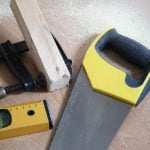Are you looking to improve the efficiency of your large home with an AC unit? Understanding the impact of air conditioning on larger spaces is crucial in effectively managing energy consumption and maintaining a comfortable indoor environment. In this article, we will explore various strategies and techniques to enhance the efficiency of your AC unit in a large home, including smart thermostat technology, insulation improvements, regular maintenance, and alternative cooling methods.
Assessing the current energy consumption of your AC unit is the first step in identifying areas for improvement. By understanding how your AC unit is currently performing, you can make informed decisions about implementing changes to increase efficiency and reduce energy costs. This includes evaluating the size of the home, the age and condition of the AC unit, and any existing insulation and sealing.
Implementing smart thermostat technology is an effective way to regulate temperature and manage energy usage in a large home. By setting specific temperatures based on occupancy and time of day, you can optimize energy consumption without sacrificing comfort.
Additionally, improving insulation and sealing in your home can minimize energy loss and reduce the workload on your AC unit. Regular maintenance, cleaning of ductwork, utilization of energy-efficient windows and doors, as well as using ceiling fans for air circulation are also essential strategies for maximizing efficiency.
Stay tuned as we delve deeper into each strategy outlined above to help you achieve optimal efficiency for your large home with an AC unit.
Assessing the Current Energy Consumption of the AC Unit
One of the first steps in improving the efficiency of a large home with an AC unit is to assess the current energy consumption of the system. This can be done by analyzing past utility bills and noting any significant spikes in energy usage, which may indicate inefficiencies in the AC unit. Additionally, an energy audit can be conducted to identify areas where energy is being wasted and to pinpoint any potential issues with the AC unit.
By understanding how much energy the AC unit is consuming, homeowners can take steps to address any inefficiencies and reduce overall energy consumption. This may involve making upgrades to the AC unit itself, implementing changes to the home’s insulation and sealing, or adjusting thermostat settings to optimize energy usage.
Furthermore, assessing the current energy consumption of the AC unit provides valuable data that can be used as a baseline for measuring improvements in efficiency. By tracking energy usage over time and making adjustments based on this information, homeowners can effectively monitor and reduce their overall energy consumption, leading to cost savings and reduced environmental impact.
Implementing Smart Thermostat Technology to Regulate Temperature
Smart thermostat technology is a cost-effective way to improve the efficiency of large homes with AC units. These devices are designed to learn your heating and cooling preferences and automatically adjust the temperature settings to maximize energy savings without sacrificing comfort. By using sensors to detect occupancy and manage temperature accordingly, smart thermostats can help reduce energy consumption, ultimately leading to lower utility bills.
According to the U.S. Department of Energy, homeowners can save up to 10% on their heating and cooling costs by simply turning their thermostat back 7°-10°F for 8 hours a day from its normal setting. With smart thermostats, this adjustment can be done automatically, allowing for significant energy savings without requiring manual intervention.
In addition, some smart thermostats offer features such as geofencing, which uses the location of your smartphone to determine when you are away from home, enabling the system to adjust the temperature accordingly.
An added benefit of smart thermostats is their ability to provide usage reports and data analysis, allowing homeowners to track their energy consumption patterns over time and make informed decisions about their HVAC usage. Additionally, many smart thermostat models integrate with home automation systems and voice assistants, offering convenience and ease of control for homeowners looking to optimize their home’s energy efficiency.
| Benefit | Data |
|---|---|
| Energy Savings | Up to 10% on heating and cooling costs |
| Convenience | Integration with home automation systems and voice assistants |
Improving Insulation and Sealing in the Home
When it comes to improving the efficiency of a large home with an AC unit, one essential aspect to consider is the insulation and sealing of the home. Proper insulation and sealing help in maintaining a consistent indoor temperature, which in turn reduces the workload on the AC unit. This not only saves energy but also prolongs the lifespan of the AC unit.
Firstly, assessing the current state of insulation in your home is crucial. An effective way to do this is by conducting an energy audit, which can identify areas where insulation may be lacking or inadequate. Common areas for improvement include attics, walls, floors, and basements. Additionally, checking for any air leaks and sealing them can significantly improve the overall efficiency of your home’s cooling system.
Another important consideration is investing in energy-efficient windows and doors. These types of windows are designed to reduce heat transfer and minimize thermal loss, thus helping to maintain a comfortable indoor temperature with less reliance on the AC unit. Similarly, insulated or sealed doors can prevent drafts and keep cool air inside during hot weather.
| Aspect | Consideration |
|---|---|
| Energy Audit | Identify areas for insulation improvement |
| Windows/Doors | Investing in energy-efficient options |
| Air Leaks | Sealing potential air leaks |
Regular Maintenance and Cleaning of AC Unit and Ductwork
Regular maintenance and cleaning of the AC unit and ductwork is crucial in improving the efficiency of a large home’s cooling system. Over time, dust, dirt, and debris can accumulate within the AC unit and the ductwork, leading to reduced airflow and energy efficiency. It is important to regularly maintain and clean these components to ensure optimal performance.
Regular Maintenance
Scheduling regular maintenance for your AC unit is essential for its longevity and efficiency. This includes tasks such as inspecting and replacing air filters, cleaning evaporator and condenser coils, checking refrigerant levels, and lubricating moving parts. Regular maintenance not only helps improve energy efficiency but also prevents costly breakdowns and repairs in the future.
Cleaning Ductwork
Ductwork can also contribute to reduced efficiency if it becomes clogged with dust, mold, or other contaminants. Professional duct cleaning services can help remove built-up debris from the ducts, allowing for better airflow and improved air quality. Additionally, sealing any leaks or gaps in the ductwork can prevent cooled air from escaping into unconditioned spaces, further enhancing efficiency.
Scheduling Professional Inspections
It’s important to schedule professional inspections of both the AC unit and ductwork at least once a year to identify any potential issues that could be impacting efficiency. A trained technician can assess the system’s overall performance, make necessary adjustments, and provide recommendations for improving energy efficiency in a large home. Regular maintenance will not only help you save on energy costs but also ensure a comfortable indoor environment throughout the year.
Utilizing Energy-Efficient Windows and Doors
Energy-efficient windows and doors play a crucial role in the overall efficiency of a large home, particularly when it comes to maintaining a comfortable indoor temperature and reducing the workload on the AC unit. By upgrading to energy-efficient windows and doors, homeowners can effectively minimize heat transfer, drafts, and air leakage, ultimately leading to lower energy consumption and reduced utility costs.
Benefits of Energy-Efficient Windows and Doors
Energy-efficient windows and doors are designed to provide better insulation, reduce outdoor noise, and minimize the amount of ultraviolet (UV) rays that enter the home. These features not only contribute to a more comfortable living environment but also help in preserving furniture, flooring, and other interior elements from sun damage. Additionally, improved insulation provided by energy-efficient windows and doors leads to a more consistent indoor temperature, reducing the need for constant adjustments to the AC unit.
Factors to Consider When Choosing Energy-Efficient Windows and Doors
When selecting energy-efficient windows and doors for a large home, it is essential to consider various factors such as U-factor, solar heat gain coefficient (SHGC), visible transmittance (VT), air leakage rate,and materials. The U-factor measures how well a window or door prevents heat from escaping while SHGC determines its ability to block heat from the sun.
VT relates to the amount of light that passes through the window or door, while air leakage rate indicates how much air can pass through gaps in its assembly. Homeowners should also evaluate different material options such as vinyl, fiberglass, aluminum, or wood based on their insulation properties and durability.
Using Ceiling Fans to Aid in Air Circulation and Cooling
Ceiling fans are an excellent way to aid in air circulation and cooling within a large home, especially when used in conjunction with an AC unit. By strategically placing ceiling fans throughout the home, you can help distribute cool air more effectively, making the entire space feel more comfortable without having to solely rely on the AC unit.
Here are some tips for using ceiling fans to improve air circulation and cooling:
- Position the fans strategically: Place ceiling fans in high-traffic areas and where people tend to congregate, such as living rooms and bedrooms. This will ensure that the cool air is circulated effectively throughout the most commonly used spaces in your home.
- Use them in conjunction with your AC: Running ceiling fans simultaneously with your AC unit can help distribute cool air more evenly, allowing you to raise the thermostat temperature a few degrees without sacrificing comfort. This can result in significant energy savings over time.
- Opt for energy-efficient models: When selecting ceiling fans for your large home, look for models that are designed to be energy-efficient. These fans not only consume less electricity but also provide better performance, ultimately contributing to lower energy bills.
By implementing these tips, you can maximize the effectiveness of your AC unit while also reducing your overall energy consumption, making it easier to keep a large home cool and comfortable even during the hottest months of the year.
Exploring Alternative Cooling Methods for Large Homes
When it comes to cooling large homes, traditional air conditioning may not always be the most efficient or cost-effective option. Fortunately, there are alternative cooling methods that homeowners can explore to improve the efficiency of their home’s cooling system. Here are some alternative cooling methods to consider:
- Evaporative Cooling: This method utilizes water evaporation to cool the air, making it an energy-efficient and environmentally friendly option. It works best in dry climates.
- Ductless Mini-Split Systems: These systems are ideal for homes without existing ductwork. They offer zone-based cooling, allowing homeowners to customize the temperature in different areas of the home.
- Geothermal Cooling: By harnessing the stable underground temperature, geothermal systems provide efficient and consistent cooling. While it requires a significant upfront investment, it offers long-term energy savings.
In addition to exploring these alternative cooling methods, homeowners should also consider making adjustments to their lifestyle and daily habits to reduce the reliance on traditional AC units. Simple changes such as using window coverings to block out sunlight, limiting heat-generating activities during peak hours, and utilizing fans for targeted cooling can all contribute to a more efficient cooling strategy for large homes.
By considering these alternative methods and implementing lifestyle changes, homeowners can improve the efficiency of their large home’s cooling system while reducing energy consumption and costs.
Monitoring and Adjusting the AC Unit Settings for Optimal Efficiency
In conclusion, improving the efficiency of a large home with an AC unit is essential for reducing energy consumption and saving on utility costs. By understanding the impact of AC on large homes and assessing the current energy consumption of the unit, homeowners can take proactive steps to make their cooling system more efficient.
Implementing smart thermostat technology, improving insulation and sealing, and conducting regular maintenance and cleaning of the AC unit and ductwork are all crucial in optimizing energy usage. Additionally, utilizing energy-efficient windows and doors, as well as using ceiling fans to aid in air circulation, can contribute to a more efficient cooling system.
Exploring alternative cooling methods for large homes can also be beneficial, such as utilizing evaporative coolers or strategically placing shade trees around the property. Finally, monitoring and adjusting the AC unit settings for optimal efficiency is a continuous process that requires attention to detail. By following these guidelines, homeowners can significantly improve the efficiency of their large home with an AC unit while also reducing their environmental impact.
Frequently Asked Questions
How Can I Make My Home AC More Efficient?
Making your home AC more efficient can be achieved through several measures. One way is to regularly clean or replace the air filters to ensure proper airflow.
Additionally, sealing any leaks in the ductwork and ensuring the home is well-insulated can also improve efficiency. Using a programmable thermostat to regulate temperature and scheduling regular maintenance by a professional can also help optimize AC efficiency.
What Happens if You Put a Too Big of an AC Unit in a House?
If you put a too big of an AC unit in a house, it can lead to various problems. Oversized AC units may cycle on and off frequently, leading to inefficient operation and causing unnecessary wear and tear on the system.
This frequent cycling can also result in uneven cooling throughout the house and increased humidity levels, which can create discomfort for occupants and potential issues with mold and mildew.
Will a Bigger AC Unit Cool My House Better?
Contrary to popular belief, a bigger AC unit does not necessarily cool a house better. In fact, an oversized unit may lead to short-cycling – turning on and off frequently – which results in inconsistent temperature control and higher energy consumption.
The key to effective cooling is ensuring that the AC unit is properly sized for the specific square footage of the home, taking into account factors such as insulation, windows, climate, and other relevant considerations.

I’m thrilled to have you here as a part of the Remodeling Top community. This is where my journey as an architect and remodeling enthusiast intersects with your passion for transforming houses into dream homes.





